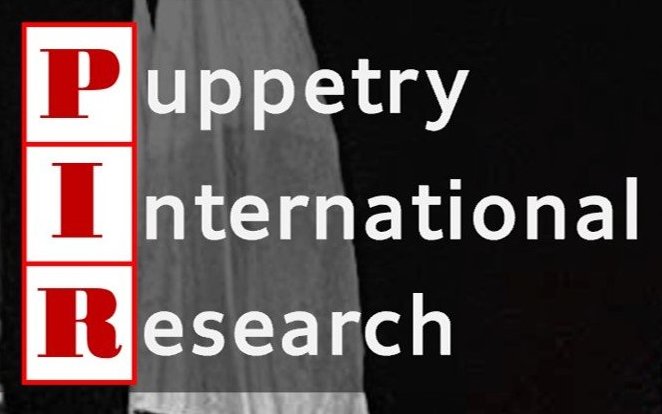PUPPETRY IN TIMES OF WAR
SPRING/SUMMER ISSUE NO. 53
Table of Contents • Abstracts
EDITORIAL
…TO NEW ADVENTURES
When the search for a new editorial and design team for Puppetry International became known to me, It was both exciting and intimidating. I have always loved this magazine and had, on numerous occasions, secretly thought about what it would be like to be at its helm. Then the opportunity presented itself...so I took a deep breath, did a little happy dance, and after talking to Michael Kelly, my partner, a puppeteer and art director, we decided to apply. After we were chosen, we had the great pleasure of being mentored for over a year by Andrew and Bonnie Periale, co-founders and creative team of UNIMA-USA publications for 371⁄2 years. During this time, we got to know some of the workings of the magazine, meet our future colleagues... and learn a great deal.
As we started our work on this issue, Andrew and Bonnie continued to shepherd us through the entire process, from editorial meetings with new colleagues, to working with authors, and all the way to final production. We are so grateful for their guidance, and the institution that they have built, which has made this magazine an indispensible part of the puppetry community, not only in the United States but around the world. It’s a legacy that we aim to honor and grow in the coming years.
As we begin this new journey, our planet is dealing with multiple crises. Our first issue, Puppetry in Times of War, investigates some of the ways that puppetry artists past and present navigate war and its aftermath —in the stories they tell, how they tell them, and what they do in times of conflict. Blair Ruble’s article offers us a small window into the world of companies who are continuing to present shows in war-torn Ukraine; while Daria Ivanova’s artist reflection about the traditional Ukrainian puppet form, vertep, shares a glimpse of past suppression and resistance expressed through the form and its current resurgence. Offering historical perspectives on this theme are Kathy Foley’s article about traditional Indonesian familial war entanglements in puppet narratives, and Yanna Kor’s analysis of two French puppet plays from the late 19th century and their roles in national myth-making. Alongside these articles, are artist reflections from Argentina, Belgium (an extract from a forthcoming book about the artist), Jordan, India and Taiwan about staging war, conflict and its consequences. On the lighter side are two book reviews, a Chicago International Puppetry festival round up, and an in-depth review from one of the featured performances at the festival.
Mike and I are grateful to UNIMA-USA and to Andrew and Bonnie for entrusting us with this wonderful publication that they’ve nurtured for so many years. We are hopeful that the work we do here honors their achievements and Puppetry International’s incredible legacy.
— Alissa Mello



